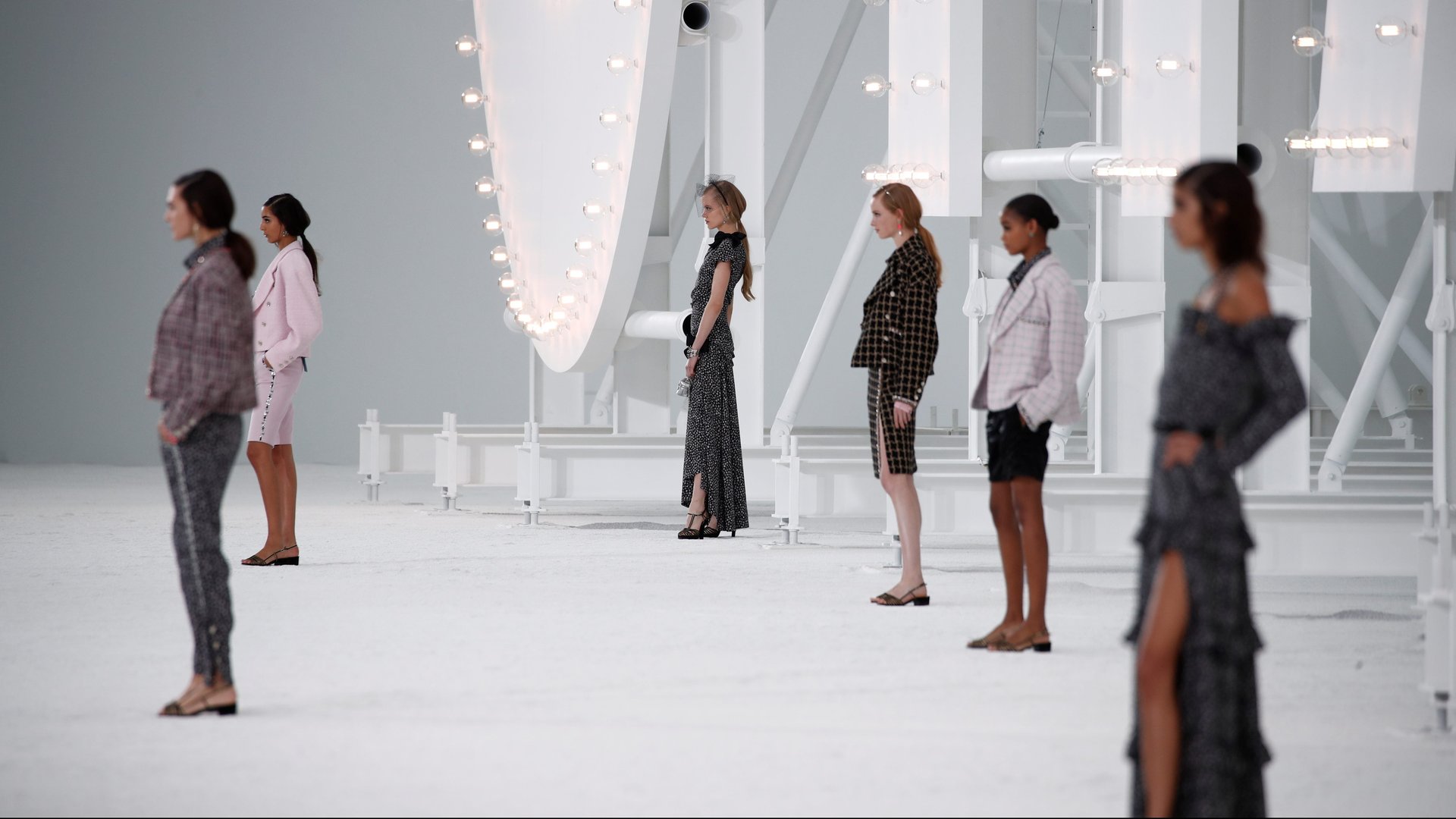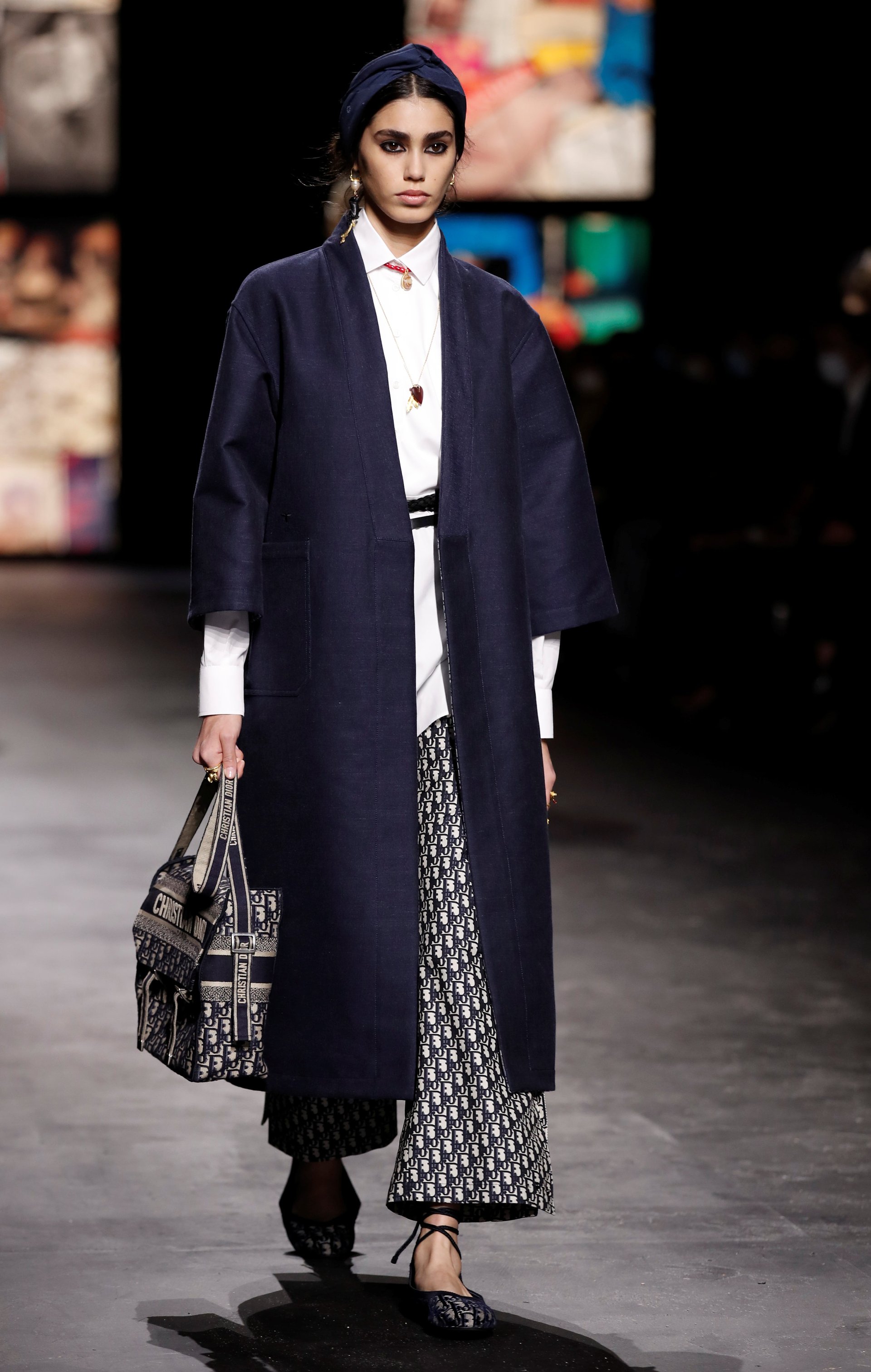Fashion is struggling to rise to the creative challenge of Covid-19
There’s an old debate about whether fashion is art or design. Both can be preoccupied with beauty, but design also has to function to be successful. A painting may serve no earthly purpose other than to reflect, provoke, or inspire. A chair can look magnificent, but if you can’t sit on it, it isn’t a very good chair.


There’s an old debate about whether fashion is art or design. Both can be preoccupied with beauty, but design also has to function to be successful. A painting may serve no earthly purpose other than to reflect, provoke, or inspire. A chair can look magnificent, but if you can’t sit on it, it isn’t a very good chair.
Clothing gets caught in the middle. Blue jeans originated as durable workwear for miners, but a good deal of runway fashion performs only the bare-minimum job of keeping the wearer from being nude—and occasionally not even that. For some designers, the lack of practical demands has allowed them to dream and approach pure art. Sometimes, however, fashion is most relevant when it doesn’t forget it’s there to be worn in real life. Now feels like such a time.
Covid-19 has altered life for many, practically demanding designers use their full creativity for clothes that accommodate their customers’ changed lifestyles. So far the industry hasn’t offered much of a response.
Last week marked the first Paris Fashion Week of women’s collections designed during the pandemic, and the general impression was lackluster. “People kvetch in group chats and Twitter threads that digital shows are not as good as the real thing—and that the real thing is not as good as it used to be,” Vogue noted in its spring trend report. It appeared that rather than try to propose a way forward for fashion, designers may have added a bit of stretch or volume to make clothes more comfortable, maybe thrown in a fancy sweatshirt, and otherwise carried on with business as usual.
One prevailing theme was big, sculpted shoulders. Chanel, designed by Virginie Viard since Karl Lagerfeld died last year, presented a number of broad-shouldered jackets—”mall Mom 1980s bouclé bombers,” as the New York Times fashion critic put it. The debut outing at Givenchy by newly appointed creative chief Matthew Williams included what looked like dramatically geometric capelets. At Balmain, Olivier Rousteing offered an array of climbing pagoda shoulders. Rick Owens put out tops that looked built on the reworked shoulders of athletic equipment.
In a case like Owens’s, the collection could be striking—simultaneously sinister and alluring. Yet across the seasons’s shows, it was often hard to see how the clothes might feel suited for wear within the next year. Shoppers are staying home, cutting travel, and have few, if any, occasions for dressing up. Maybe the clothes will look great hanging in store windows or in the occasional Instagram image. It left fashion feeling irrelevant for life beyond a Zoom call.
To be fair, the pandemic has taken a psychological toll that can understandably sap creative energy, and there could be a variety of reasons for the response. Designers may have begun sketching out their ideas at the start of the outbreak in Europe, before it was clear what life would be like several months on. They may have hoped that by the time clothes hit the market months from now Covid-19 will be mostly in the past, though experts believe that’s unlikely.
Many also use runway shows to make creative statements, not necessarily to showcase their wearable clothes, as Owens has previously acknowledged. Perhaps store buyers will still find those in the virtual showrooms where they’re making their purchasing decisions. At big luxury companies in particular, the clothes can be tantamount to a marketing exercise deployed to define the brand image and juice sales of high-margin items such as bags and fragrances.
And then one of fashion’s great attributes is that it can provide an escape into fantasy. Christian Dior made his name in 1947 with an opulent, ultra-feminized silhouette that provided a new outlook after the hard years and rationing of World War II.
The question is whether now is the time for fantasy. That isn’t fashion’s only job, and practical considerations don’t have to equal creative constraints. One of Coco Chanel’s innovations was using jersey, a fabric more commonly found in men’s underwear at the time, to make her sporty and functional looks.

A handful of designers did clearly rethink their work and how it could serve customers in the present situation. Maria Grazia Chiuri, the current head women’s designer at Dior, took Dior’s highly structured clothes and softened everything. “We had to approach this collection with an idea more of design,” she told Vogue. “We are living in a different way and staying more at home within our intimacy. Our clothes have to reflect this new style of life.”
Not all shoppers may love the result, but they should love that she thought about how to design for their needs.